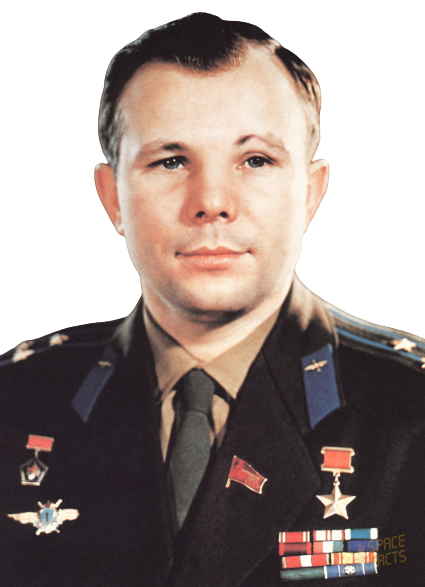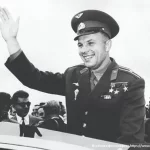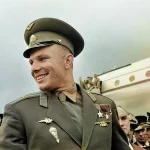
17.12.2022
Yuri Alekseyevich Gagarin celebrated his last birthday in the Crimean Evpatoria. Why there? In Evpatoria, there was the so-called NIP-16 (Scientific and Measuring Station № 16).
It was established as a Center for Long-Range Space Communications and worked mainly with interplanetary spacecraft: for example, NIP-16 operators showed themselves for the first time in February 1961, when the Venus-1 spacecraft was launched.
What kind of project were they involved in in March 1968?
To answer this question, it is necessary to go back in time. In 1964, after the Americans reported the successful launch of the Saturn I heavy rocket, the leadership of the Soviet Union realized that superiority in space technology was slipping away and finally considered the conquest of the Moon. Decree No. 655-268ss of the CPSU Central Committee and Council of Ministers “On Research of the Moon and Outer Space” of August 3, 1964, stated that the main objective was to have a Soviet cosmonaut land on the Moon’s surface by the end of 1967 – that is, by the 50th anniversary of the Great October Revolution! Implementation of the intermediate program of a lunar mission was assigned to a design bureau headed by Vladimir Chelomey, who was working on the preliminary design of the lunar lander LK-1, launched by the powerful rocket UR-500K (Proton).
In October 1964, Nikita Khrushchev was dismissed, and Chelomey’s bureau, which had been openly supported by the head of state before, was “overboard”. The management of the lunar program was fully transferred to Sergei Pavlovich Korolev, moreover, he was able to use all of Chelomey’s achievements in manned lunar missions, including the rocket “UR-500K”.
To begin with, the designers of OKB-1 tried to “cross” Chelomey’s three-stage rocket on paper with a modified version of the 7K spacecraft. A variety of variants were proposed: for example, the possibility of creating a simplified vehicle “7K-PLC” (“simplest lunar craft”) was considered. The discussed modifications were simpler and more rational than the original “7K-9K-11K” and seemed to have real chances for implementation.
On August 26, 1965, the chairman of Military-Industrial Commission held a meeting “On the state of work on exploration of space, the Moon and planets”. It was spoken about unsatisfactory progress of work on lunar programs, which “jeopardizes the priority of the USSR in the field of space exploration”. It was ordered to consider the implementation of a manned flight around the Moon in 1965-1967 as the central task. As a result, the third – “UR-500K-L1” (“UR-500K-7K-L1”) was born on the basis of two projects. In December 1965 it was approved and became basic.
The project proposal was to fly to Moon without landing on its surface by modified 7K-L1 spacecraft launched from circumterrestrial orbit with upper stage D. With regard to payload mass, the project was at the limit of rocket and upper stage capabilities with Soyuz spacecraft (“7K-OK”), which had an estimated mass of 6.5 tons, all systems, which could be avoided during Moon exploration, were removed. Because of this, the spacecraft was deprived of the living compartment and consisted only of the descent module (SA) and the instrument and equipment compartment (IAU). Two chairs with shock-absorbers of “Kazbek” system, “Salyut-1M” camera with additional long-focal lens “Tair-33S”, cinema camera “16LK-K1” of Krasnogorsk plant, automatic photo camera “AFA-BAM”, photo camera “SKD”, individual dosimeters were to be installed in manned version of spacecraft 7K-L1. Astronauts were to fly in sports suits, without life suits.
The flight-design trials program of 7K-L1 spacecraft, officially named Probe (product index 11F91), included ten unmanned flights up to first manned flight around the Moon, planned for June 26th 1968; three more flights were to follow to confirm the priority (two unmanned and one manned). The crews included Yuri Gagarin, Andriyan Nikolaev, Vladimir Komarov, Valery Bykovsky, and Yevgeny Khrunov as commanders; Viktor Gorbatko, Georgy Grechko, Vitaly Sevastyanov, Valery Kubasov, and Vladislav Volkov as crewmembers. If the launches of the first manned Soyuz and unmanned Probes had gone well, it is quite possible that soon, six months ahead of the American Apollo 8 spacecraft, the crew of Yuri Gagarin and Viktor Gorbatko would have gone to the Moon. The Americans would again have suffered a crushing defeat in space, which would probably have affected the U.S. lunar program itself.
However, from the very beginning, the 7K-L1 project faced a lack of funding, a lack of necessary production capacity, and a paucity of test facilities. The flight test schedule was repeatedly changed and the date of the manned flight was pushed back. The last manned flight was postponed until December 9, 1968.
The first spacecraft of the project was launched only on March 10, 1967. The purpose of launching a simplified version of 7K-L1P (¹ 2P), named Cosmos-146, was to test the upper stage D. First activation of block for injection of spacecraft into Earth orbit was successful, but due to faults in control system, its second activation caused Cosmos-146 to deviate from design trajectory. The apogee increased and perigee decreased, and as a result the spacecraft burned up in the atmosphere on the second day of the flight.
The next 7K-L1P (¹ 3P), called Cosmos-154, was launched on April 8, 1967, but it was not able to direct it to the Moon. This time, due to a failure in the control system, there was an early jettisoning of the small engine units that provided the launch of the D Block propulsion system, and the spacecraft remained in Earth orbit.
The 7K-L1 spacecraft (#4) was not launched into orbit at all. During its launch on September 28, 1967, one of the six engines of the first stage of “UR-500K” rocket failed and it was blown up at 67th second of flight.
Another attempt to launch 7K-L1 (No.5) on November 22, 1967 was also unsuccessful. This time one of the four engines of the second stage of launch vehicle failed to reach necessary thrust. The rescue system was successful, it steered the descent vehicle away from the dying rocket complex.
It was not until March 2, 1968 that spaceship 7K-L1 (¹ 6), dubbed Probe-4, was launched into space, and then, using Block D, was translated into a highly elliptical orbit with an apogee of about 300 000 km, simulating a flight around the Moon. Because the attitude control system was not ready, the spacecraft was launched along a ballistic trajectory. Because of the danger of landing outside Soviet territory, the descent vehicle was destroyed by an emergency detonation over the Bay of Biscay on March 9.
With the beginning of launches of manned spacecraft, NIP-16 became one of the command posts, and Gagarin periodically visited Yevpatoria. Since the launch of the “Probe-4” was a success, on March 3 Gagarin led a group of officers, including Alexei Leonov, Pavel Popovich and Valery Bykovskiy, from Tyuratam polygon to Evpatoria, to try remote control of the prototype “7K-L1” in practice.
I wonder what Gagarin was thinking about in those days? He knew that this was the first successful Soviet lunar mission, that others would follow, that by the end of the year it was very likely that the first crew would go to the Moon, which would also go down in history. He dreamed of being on that crew, but he could not seriously count on such happiness, because the risk was too great, and he was forbidden to take risks. Maybe later – on the next flight? We’ll never know.
Of course, the residents of Evpatoria were aware that Gagarin was in town, and that he was just approaching his thirty-fourth birthday. And they were well prepared for the celebration.
I must say that Gagarin has long established contacts with the Evpatoria community. He was there for the first time in August 1965 during his vacation in Gurzuf, and he met with the pioneers, party leaders and the leaders of the city. Later, when he was in Evpatoria, Yuri stopped at the sanatorium “Drummer”, became friends with the Second Secretary of the City Party Committee Valentin Petunov. On March 7, 1968 Gagarin came to Petunov and told him that he was going to celebrate his birthday. He asked to “arrange a table” for the cosmonauts who arrived with him and gave him fifty rubles. Although Petunov refused to pay, Gagarin insisted: in money matters he was scrupulous and did not want to be in debt to anyone. The table was set in a luxury room “Drummer”.
But on March 9, Evpatoria residents organized their own celebration – on the second floor of the cafe “Jubilee” (International Street, 115). There came to congratulate Gagarin local party workers, chairmen of collective farms, servicemen of Evpatoria NIP-16 and Simferopol NIP-10. Everyone was impressed by the manager of the trust of canteens and restaurants Ivan Kozitsky: on behalf of the trustees he presented Yuri with a huge cake in the form of a book, with the inscription: “The Diary of Cosmonaut”. However, no one dared to cut the cake and Gagarin decided to take it with him to Star City.
At the end of the raucous evening, Yuri Alekseyevich said: “I will come to Yevpatoria again soon.” Unfortunately, he could not fulfill his promise.




